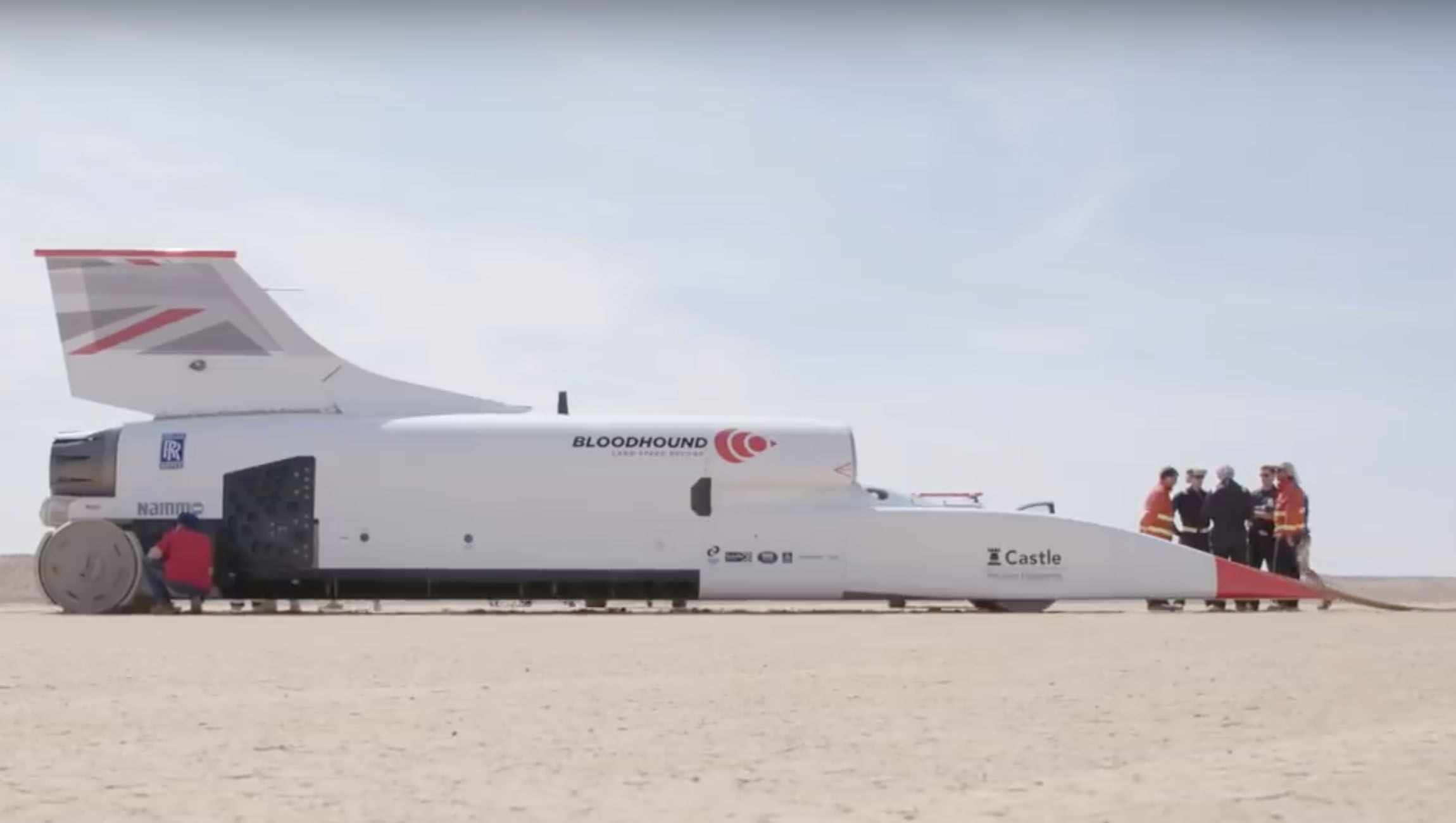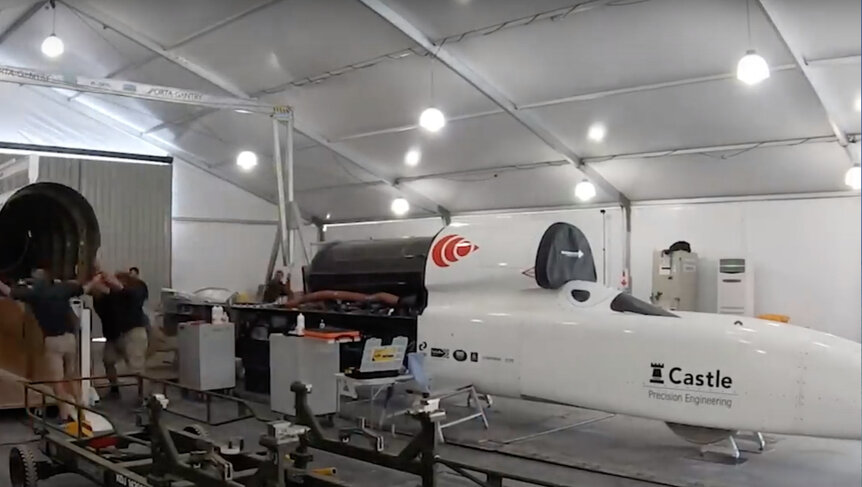Create a free profile to get unlimited access to exclusive videos, sweepstakes, and more!
Rad new jet-powered car just hit 500 mph, but can it break the speed of sound?

For anyone who’s ever dreamed of owning one of those flying cars from Blade Runner or stealing Han Solo’s iconic Star Wars ride, the Millennium Falcon, the Bloodhound is kind of like a mashup of both. You won't even think it's a big deal that it doesn't actually fly.
There is now actually such a thing as a car-on-steroids designed to reach supersonic speeds. If the jet engine and built-in parachute braking system aren’t badass enough — never mind the name Bloodhound — it’s been tearing around the Kalahari Desert in South Africa and recently hit 501 mph. The speed of sound is 761 mph. Developed at Swansea University, Wales, is going to be ripping through the desert for the next year and a half, trying to crush that barrier and the land speed record of 763 mph.
By the way, the same former Royal Air Force pilot who broke that land speed record in another jet-powered vehicle (Thrust SSC) has been gunning this thing around. He’s behind the wheel of 7 tons of metal with a Rolls-Royce EJ200 turbo jet engine. Just to give you an idea, that same engine is used in some fighter planes.
“The one thing I can’t tell you is what the car looks like when it’s running at high speed. I’m told it’s amazing to watch,” Green said in his latest monthly diary entry tracking Bloodhound’s progress. Zoom over here to find out what it’s like to be in the cockpit.
Going beyond the speed of sound might sound easy for a supervehicle like the Bloodhound. For something that is meant to stay on Earth and not reach Mach-whatever in the air, it means an immense amount of strain. Aerodynamic drag is just one side effect of breaking the speed of sound, and the drag when Bloodhound finally gets there is going to be tremendous. Another is the massive shockwave phenomenon otherwise known as sonic boom.
When something goes that fast for long distances, it outruns the sound waves it creates. Air molecules then begin to compress because they just can’t keep up with that. Because of this, pressure at the front of the vehicle skyrockets into supersonic shock waves that the human eye can’t see, but the human ear can definitely hear when they merge together into a fantastic boom. It would sound like the thunder before an epic storm to anyone who didn’t know what was really going on.
Also unlike a plane, the sonic boom Bloodhound will generate when it does rip through the sound barrier will hit the ground rather than going off in the air. Nobody is going to know the effects of that until the car actually does go supersonic.
If Bloodhound is going to reach its ultimate speed, 1,000 mph, that is going to be a challenge in aerodynamic design. Scientists at the University of Swansea’s College of Engineering keep doing ongoing Computer Fluid Dynamics (CFD) research with computational models that tell them how to evolve the car as it keeps pushing for faster and faster speeds.
“The CFD modelling continues to be one of the prominent tools used to develop the surface geometry of BLOODHOUND,” says the Bloodhound page on the university’s site.
Next time you hear what you think is thunder, you might want to question where that came from.
(via LiveScience/Bloodhound LSR)















